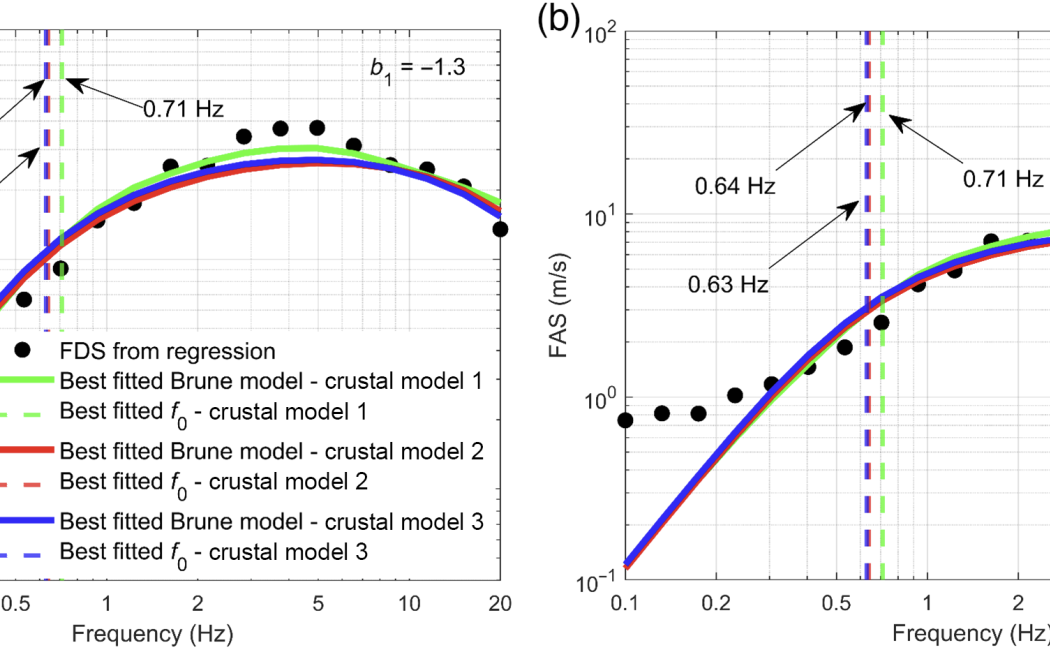


01 June, 2023
The 2021 5.9 Woods Point event is the largest onshore earthquake that has occurred in the recorded history of southeastern Australia since European settlement. To study its source and ground‐motion characteristics and to extract information for local seismic hazard analysis, we employ a stochastic finite‐fault simulation approach to simulate ground motions for this event based on the observations collected from 36 onshore stations. We determine the regional distance‐dependent attenuation parameters using the horizontal Fourier acceleration amplitude spectrum in the frequency range of 0.1–20 Hz. We parameterize path parameters using different models to consider uncertainties and sensitivities. To investigate local site effects, we construct a ‐based site amplification model. Source parameters are then determined by fitting the theoretical Brune’s model with a reference Fourier source spectrum at 1.0 km. The value for the reference rock site is estimated as , and dynamic stress drop is found to be 41.0 MPa by minimizing the overall absolute residual of 5% damped pseudospectral acceleration. We validate the simulations by comparing simulated and observed ground motions in terms of various intensity measurements; analyses of residuals show that the simulations are in good agreement with observations (average residual is close to 0). To facilitate future probabilistic seismic hazard analysis, six selected ground‐motion models are ranked using the deviance information criteria based on an independent data set consisting of field observations and simulated ground motions.
See full article here: